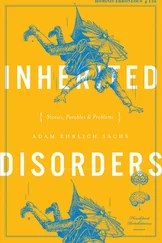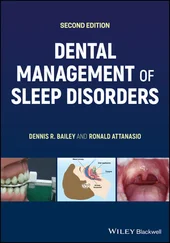Sean Gallagher - Musculoskeletal Disorders
Здесь есть возможность читать онлайн «Sean Gallagher - Musculoskeletal Disorders» — ознакомительный отрывок электронной книги совершенно бесплатно, а после прочтения отрывка купить полную версию. В некоторых случаях можно слушать аудио, скачать через торрент в формате fb2 и присутствует краткое содержание. Жанр: unrecognised, на английском языке. Описание произведения, (предисловие) а так же отзывы посетителей доступны на портале библиотеки ЛибКат.
- Название:Musculoskeletal Disorders
- Автор:
- Жанр:
- Год:неизвестен
- ISBN:нет данных
- Рейтинг книги:5 / 5. Голосов: 1
-
Избранное:Добавить в избранное
- Отзывы:
-
Ваша оценка:
- 100
- 1
- 2
- 3
- 4
- 5
Musculoskeletal Disorders: краткое содержание, описание и аннотация
Предлагаем к чтению аннотацию, описание, краткое содержание или предисловие (зависит от того, что написал сам автор книги «Musculoskeletal Disorders»). Если вы не нашли необходимую информацию о книге — напишите в комментариях, мы постараемся отыскать её.
Hands-on guidance and tools for the prevention of musculoskeletal injuries in the workplace Musculoskeletal Disorders: The Fatigue Failure Mechanism,
Musculoskeletal Disorders: The Fatigue Failure Mechanism
Musculoskeletal Disorders — читать онлайн ознакомительный отрывок
Ниже представлен текст книги, разбитый по страницам. Система сохранения места последней прочитанной страницы, позволяет с удобством читать онлайн бесплатно книгу «Musculoskeletal Disorders», без необходимости каждый раз заново искать на чём Вы остановились. Поставьте закладку, и сможете в любой момент перейти на страницу, на которой закончили чтение.
Интервал:
Закладка:
Table of Contents
1 Cover
2 Title Page Musculoskeletal Disorders The Fatigue Failure Mechanism Sean Gallagher Auburn University, Auburn, AL, USA Mary F. Barbe Temple University, Philadelphia, PA, USA
3 Copyright Page
4 Dedication
5 Preface Bibliography
6 Acknowledgments
7 About the Authors
8 1 Introduction Bibliography
9 2 Common Musculoskeletal DisordersOverview Burden of MSDs Common Musculoskeletal Disorders Commonalities Among MSDs Bibliography
10 3 Structure and Function of the Musculoskeletal SystemA Systems View of the Musculoskeletal System Connective Tissues: General Overview Skeletal (Striated) Muscle Tendon Cartilage Bone Ligament Joints Summary Bibliography
11 4 Structure and Function of the Nervous System and Its Relation to PainOverview A Systems View of the Nervous System An Introduction to Cellular Components of the Nervous System Structure and Function of the Peripheral Nervous System Interactions of Peripheral Nerves with the Musculoskeletal System Central Nervous System Components that Interact with the Musculoskeletal System Pain Summary Bibliography
12 5 Fundamental Biomechanics ConceptsIntroduction Newton's Laws Biomechanical Modeling Summary Bibliography
13 6 Material Properties of Musculoskeletal and Peripheral Nerve TissuesOverview Fundamentals of Materials Science Material Deformation of Musculoskeletal Tissues General Characteristics of Deformation in Musculoskeletal Tissues Material Properties of Musculoskeletal Components Material Properties of Peripheral Nerves Summary Bibliography
14 7 Fatigue Failure of Musculoskeletal TissuesIntroduction Ex Vivo Studies of Fatigue Failure in Musculoskeletal Tissues In Vivo Studies of Fatigue Failure Epidemiological Data Summary Bibliography
15 8 MSDs as a Fatigue Failure ProcessIntroduction Prior Models and Approaches Upper Extremity Risk Assessment Tools Summary of Prior Models Considering MSD Risk Factors from the Fatigue Failure Perspective Benefits of the Fatigue Failure Model Other Potential Applications of Fatigue Failure Summary Bibliography
16 9 Fundamentals of Fatigue Failure AnalysisIntroduction Fatigue Terminology Mechanisms of Fatigue Failure The Stress‐Life ( S – N ) Curve Plastic Strain Fatigue Life Estimation Methods Cumulative Damage and Residual Strength Models Effects of Mean Stress on Fatigue Life Cycle Counting in Variable Amplitude Stress Exposures Weibull Analysis of Fatigue Life Creep Loading and Creep‐Fatigue Summary Bibliography
17 10 Fatigue Failure in a Biological EnvironmentIntroduction Responses of Inert Versus Biological Materials to Stress Healing of Damaged Tissues Self‐Healing in Engineered Materials Factors Influencing Healing Kinetics Effects of Personal Characteristics on Wound Healing Summary Bibliography
18 11 Injury and Self‐Repair of Musculoskeletal TissuesIntroduction Injury‐Induced Inflammation Wound Healing—Physiological Versus Pathological Unique Injury and Healing Mechanisms and Capacity in Specific Musculoskeletal and Neural Tissues Effects of Continued Tissue Loading on the Healing Process Summary Bibliography
19 12 Personal Characteristics and MSD RiskIntroduction Biological Variability Age Sex Body Size and Composition Fatigue Failure Implications Regarding Personal Characteristics Summary Bibliography
20 13 Using Fatigue Failure Principles to Assess MSD RiskIntroduction Application of Fatigue Failure Principles to MSD Risk Assessment General Principles of Fatigue Failure Theory Fatigue‐Failure Based Risk Assessment Tools Current and Future Developments Summary Bibliography
21 14 Implications for MSD PreventionIntroduction The importance of Assessing Cumulative Damage Identifying and Managing Risky Tasks Stress Reduction/Cycle Reduction The Load/Repetition Trade‐off The Central Role of Tissue Strength Impaired Healing and the Fatigue Life of Musculoskeletal Tissues Rest Job Rotation Exoskeletons and MSD Prevention Summary Bibliography
22 15 Optimizing Musculoskeletal HealthIntroduction General Reducing MSD Risk in Occupational Settings Treatment of Injuries Summary Bibliography
23 16 Status of Knowledge and Unanswered QuestionsIntroduction Improved Characterization of Musculoskeletal Tissue Properties Improved Characterization of the Damage Response to Repeated Stress of Musculoskeletal Tissues In Vivo Characterization of the Remodeling and Healing Responses in Musculoskeletal Tissues Musculoskeletal Stress Thresholds Musculoskeletal Tissues in the Resting State Risk Assessment in Epidemiological Studies Assessing the Risk of Multiple Loading Modes Dwell and Combination Loading Summary Bibliography
24 Index
25 End User License Agreement
List of Tables
1 Chapter 2 Table 2.1 Summary of Common MSDs
2 Chapter 3 Table 3.1 General Features of Connective Tissues Table 3.2 Summary of Cells, Subtypes, Extracellular Matrix (ECM), and Funct... Table 3.3 Summary of Cells, Extracellular Matrix (ECM), Subregions, and Fun... Table 3.4 Summary of Cells, Extracellular Matrix (ECM), Subtypes, and Funct... Table 3.5 Summary of Cells, Extracellular Matrix (ECM), Subtypes, and Funct... Table 3.6 Summary of Cells, Extracellular Matrix (ECM), Subtypes, and Funct... Table 3.7 Classifications of Joints Table 3.8 Summary of Non‐Neural Tissues of the Musculoskeletal System
3 Chapter 4 Table 4.1 Basic Arrangements of Neuronal Cell Bodies and Their Processes Table 4.2 Examples of Neurotransmitters and NeuropeptidesTable 4.3 Main Types of Neuroglia and Their PropertiesTable 4.4 Structure of a SynapseTable 4.5 Comparison of Exteroreceptors Versus InteroreceptorsTable 4.6 Main Functional Divisions of the CNS that Interact with the Muscu...Table 4.7 Pain Terminology (Pain, 2018)Table 4.8 Summary
4 Chapter 5Table 5.1 Estimates of Biomechanical Parameters (Elbow Moment, Required Mus...
5 Chapter 6Table 6.1 Definitions of Common Material CharacteristicsTable 6.2 Anisotropic Loading Responses of the Human Femoral Cortical Bone...Table 6.3 Tensile Fracture Stress (MPa) of Femoral Condyle Hyaline Cartilag...Table 6.4 Tensile Fracture Stress (MPa) of Femoral Condyle Hyaline Cartilag...Table 6.5 Elastic Modulus Values (MPa) for Fibrocartilage in Lateral and Me...Table 6.6 Ultimate Tensile Strength and Other Characteristics After Tensile...Table 6.7 Rupture Probability for Weights and Excursions TestedTable 6.8 Percent Retraction of Whole Nerve, Sheath, and CoreTable 6.9 A Summary of the Material Properties of Musculoskeletal Tissues
6 Chapter 7Table 7.1 Cumulative Damage Observed in Ex Vivo Tested Tendons at Different...Table 7.2 Percentage of Motion Segments Failing at Different Numbers of Loa...
7 Chapter 8Table 8.1 Example of the influence of Variable Tendon Ultimate Stress on th...
8 Chapter 9Table 9.1 Determination of the Percentage of Total Damage for Scenario Abov...Table 9.2 Calculation of Residual StrengthTable 9.3 Estimates of Cumulative Damage from Rainflow Analysis, Assuming t...Table 9.4 A Representation of a Hypothesized Tendon Loading History Broken ...Table 9.5 Fatigue Life Data for Human Extensor Digitorum Longus Tendons and...Table 9.6 Initial Data Required for Regression to Determine Weibull Plot an...Table 9.7 Failure Probabilities and Reliability for EDL Tendons as a Functi...Table 9.8 Estimated Cycles to Failure for Various Levels of Reliability for...Table 9.9 Fatigue Damage Per Cycle and Creep Damage Per Second at Various P...
9 Chapter 11Table 11.1 Examples of Mediators of InflammationTable 11.2 Examples of Mediators of Tissue Repair (Including Fibrotic Repai...Table 11.3 Differences Observed Between Normal Ligament Tissue and Repaired...Table 11.4 Types of Cartilage Damage and Subsequent EventsTable 11.5 Limitations to Articular Cartilage Self‐RepairTable 11.6 Factors Modifying Bone Self‐Repair, Growth, and MaintenanceTable 11.7 Estimated Healing Times After Acute InjuryTable 11.8 Effects of Repeated Fatigue Loading on Tissue Healing and Repair...
Читать дальшеИнтервал:
Закладка:
Похожие книги на «Musculoskeletal Disorders»
Представляем Вашему вниманию похожие книги на «Musculoskeletal Disorders» списком для выбора. Мы отобрали схожую по названию и смыслу литературу в надежде предоставить читателям больше вариантов отыскать новые, интересные, ещё непрочитанные произведения.
Обсуждение, отзывы о книге «Musculoskeletal Disorders» и просто собственные мнения читателей. Оставьте ваши комментарии, напишите, что Вы думаете о произведении, его смысле или главных героях. Укажите что конкретно понравилось, а что нет, и почему Вы так считаете.




![Ally Carter - [Gallagher Girls 02 ] - Cross My Heart & Hope To Spy](/books/262178/ally-carter-gallagher-girls-02-thumb.webp)







![John Bruce - The Lettsomian Lectures on Diseases and Disorders of the Heart and Arteries in Middle and Advanced Life [1900-1901]](/books/749387/john-bruce-the-lettsomian-lectures-on-diseases-and-disorders-of-the-heart-and-arteries-in-middle-and-advanced-life-1900-1901-thumb.webp)